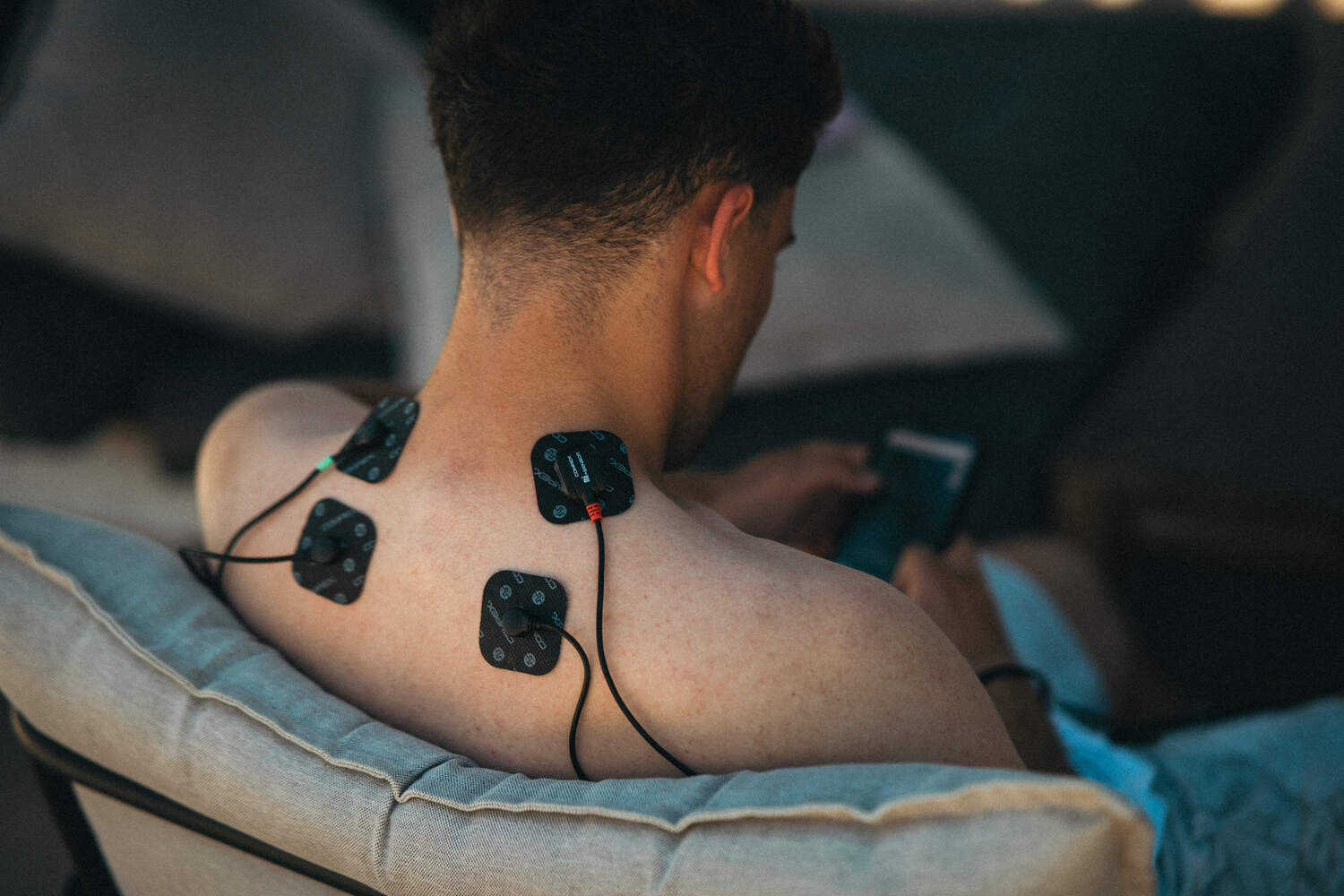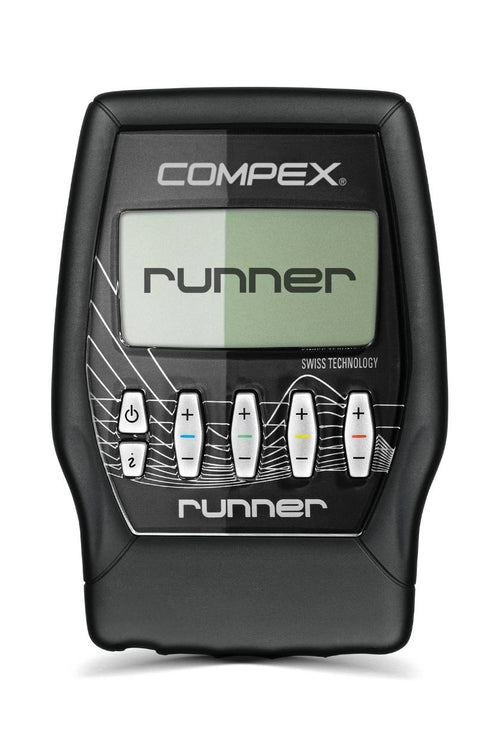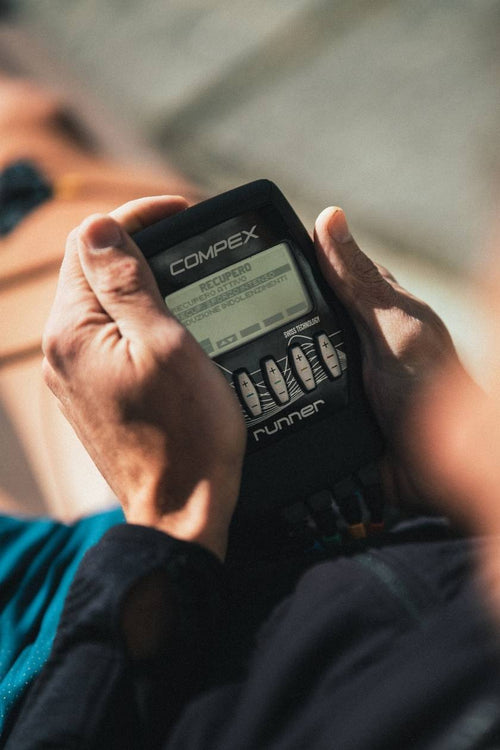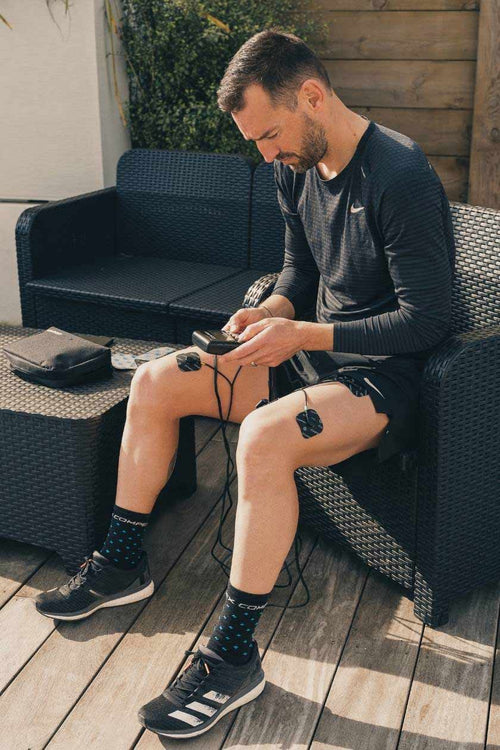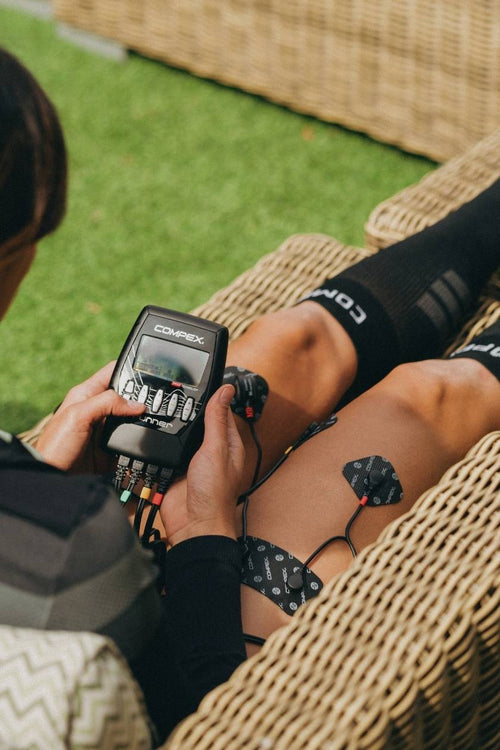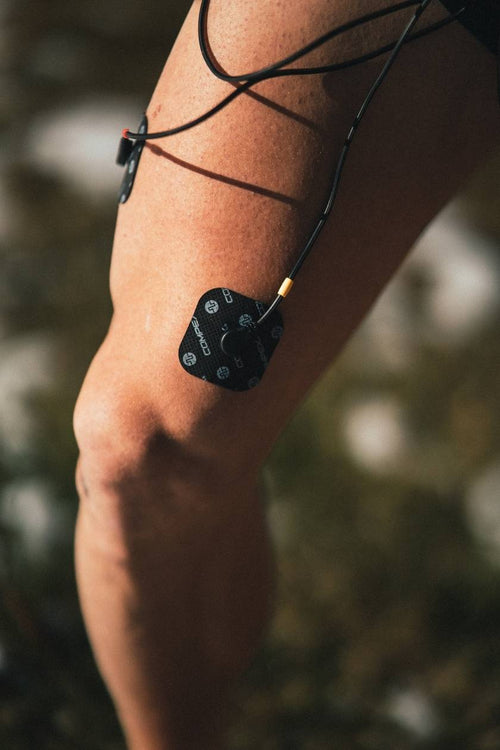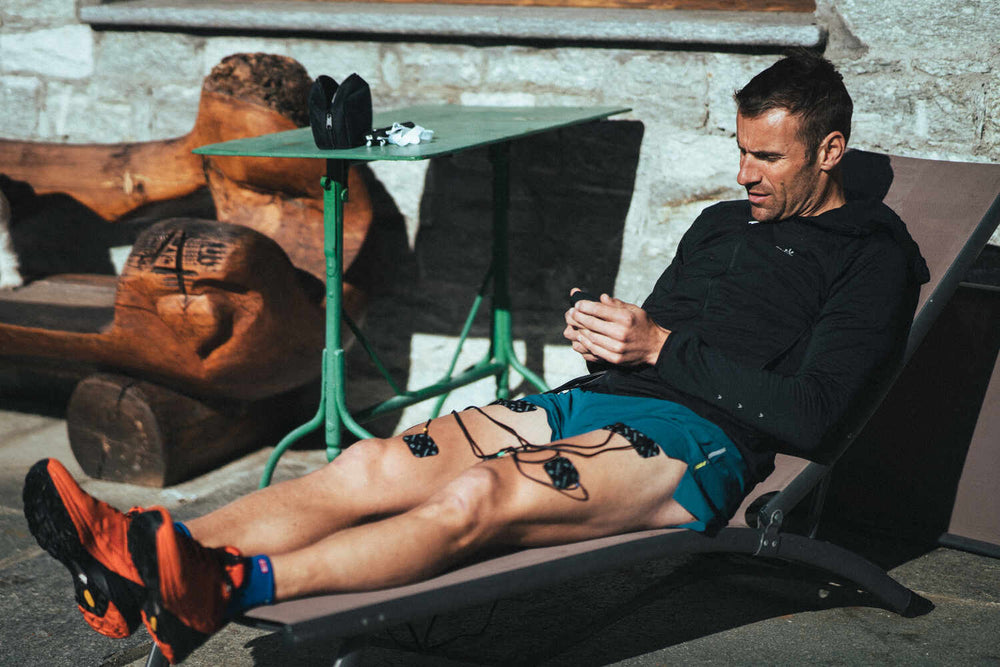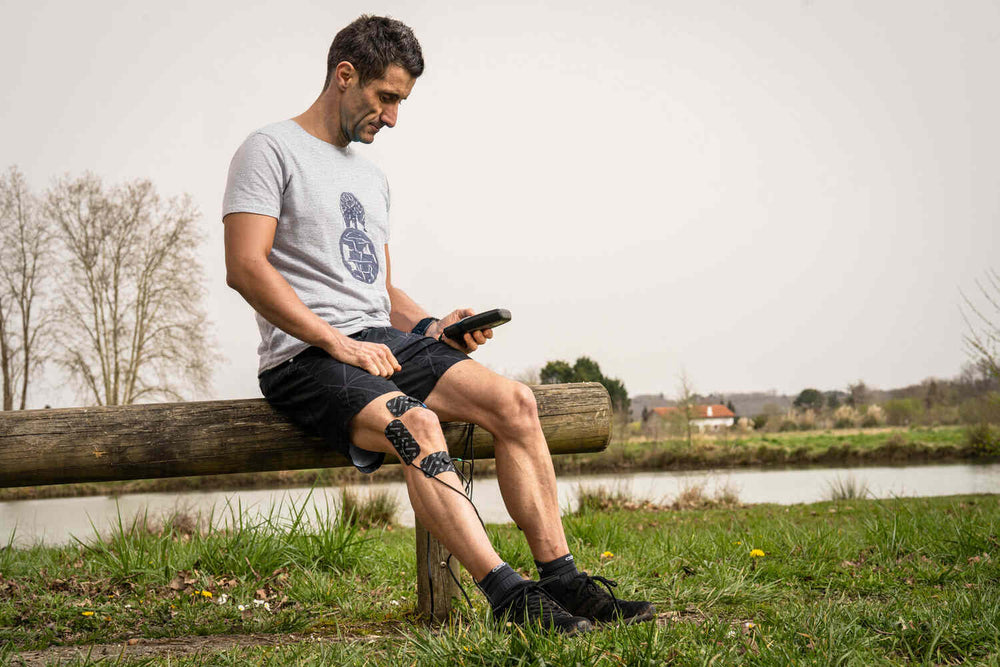Popular Products
COMPEX RUNNER EMS MUSCLE STIMULATOR
€299,99
Technology: Wired
Muscle intelligence: MI-scan, MI-range, MI-tens
Web connection: No
Download objective: No
Upload remote history: No
Program categories: Conditioning, Fitness, Pain Management, Recovery / Massage, Rehabilitation
# of programs: 18
# of channels: 4
Screen: Matrix monochrome
Power: 120 mA, 400 us, 150 Hz
Energy: Rechargeable battery in less than 4h30
- Runner EMS Muscle Stimulator Remote Control [qty: 1]
- 6P Snap Cables [qty: 4]
- Mi-Sensor [qty: 1]
- Charger [qty: 1]
- Snap electrodes 5x10 cm [qty: 4]
- Snap electrodes 5x5 cm [qty: 8]
- Transport case
- Quick start guide
The Compex Runner EMS muscle stimulator was built with the specific aim of boosting running performance and improving your post-run muscle recovery.
Compare this to our other EMS muscle stimulators, learn more about training using a Compex device as well as bespoke training plans, and find out more about what electrical muscle stimulation is.
No icon found
No icon found
No icon found
No icon found
Features
Categories & Programs/Settings
Download the Compex Coach App

How does Electrical Muscle Stimulation (EMS) work?
